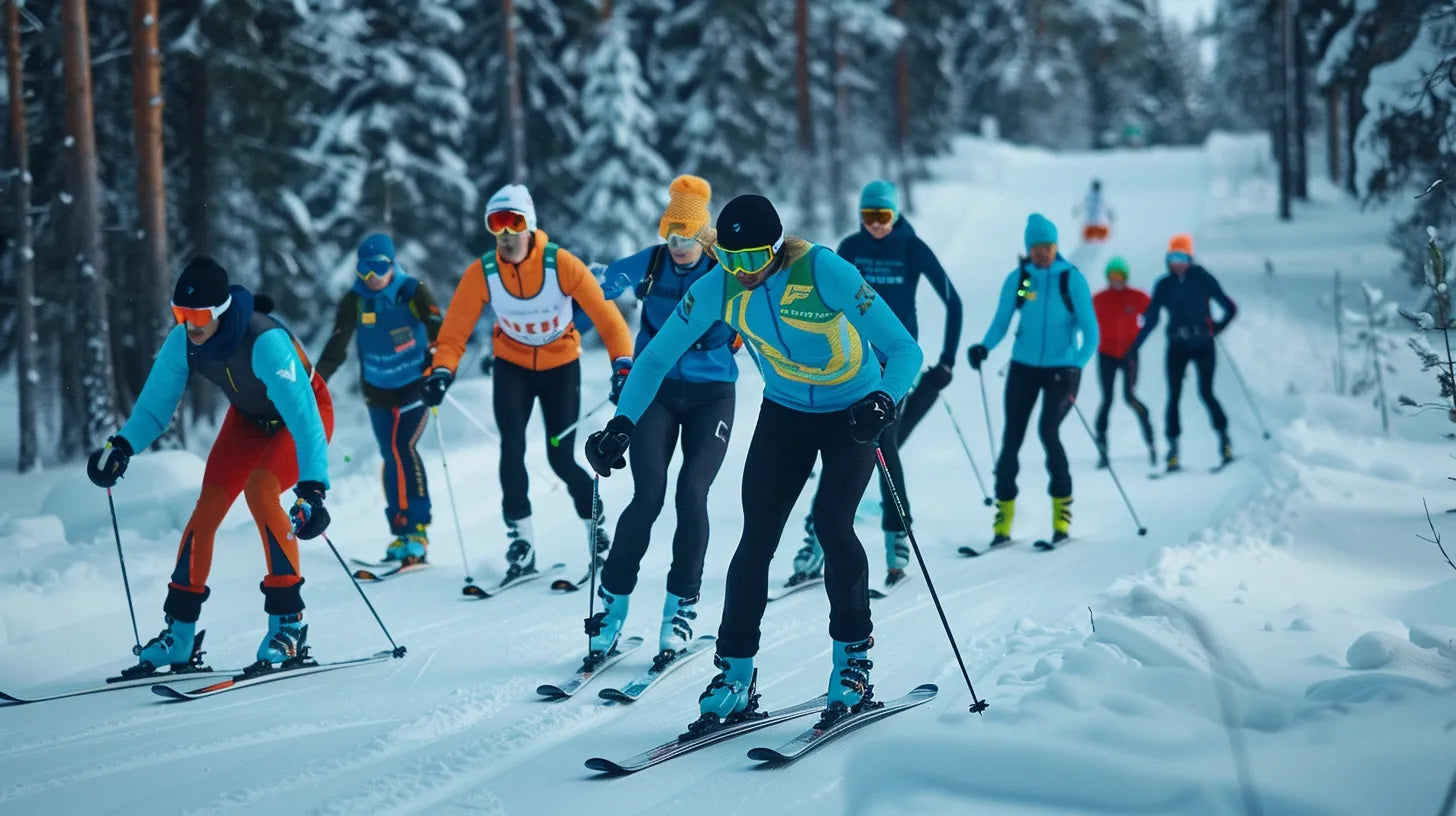
Vasaloppet Training Program: From Beginner to Elite Skier
Vasaloppet Training Program - The Key to Success
Skiing the Vasaloppet is a dream for many cross-country skiers, but it requires a lot of preparation to succeed. Whether your goal is simply to finish or to set a personal best, a well-structured training program is essential. By planning your training well in advance and structuring it intelligently, you increase your chances of achieving your goals.
But what does a good training program for the Vasaloppet look like? Here, we go through the most important components and provide tips on how to structure your training, whether you're a beginner or an experienced long-distance skier.
Base Training - Build a Strong Foundation
The foundation for all training leading up to the Vasaloppet is a good base fitness level. This involves long, easy sessions at a low heart rate to build endurance and strengthen your heart, lungs, and muscles. As a beginner, you should spend a lot of time on base training, preferably in the form of running, cycling, or roller skiing during the off-season.
As a more experienced skier, you likely already have a good base fitness level, but don't forget to maintain it throughout the winter. Include a few longer, easy sessions each week alongside your more intense workouts.
Intervals - Increase Speed and Endurance
To be able to maintain a high pace throughout the Vasaloppet's 90 kilometers, you also need to train your oxygen uptake and lactate tolerance. You can best achieve this through interval training, where you alternate hard bursts of speed with recovery periods.
An example of a good interval workout is 5 x 4 minutes with 2 minutes of rest between each interval. Try to do the intervals on an uphill for an extra challenge. Include 1-2 interval sessions per week during your build-up period.
Long Distance Sessions - Sharpen Your Form for the Race
As the Vasaloppet approaches, it's time to start incorporating longer distance sessions to accustom your body to the demands of skiing 90 kilometers. Aim to do at least one 4-5 hour session every other week during the final 6-8 weeks before the race.
Try to do these sessions on terrain similar to what you'll encounter during the Vasaloppet, with a mix of flat sections and challenging climbs. Find a rhythm in your skiing and practice being as energy-efficient as possible.
Strength Training - Prevent Injuries and Increase Power Output
Having a strong upper body and stable core muscles is essential for maintaining good technique throughout the Vasaloppet. Strength training also helps you prevent injuries and increase your power output during poling.
Aim for a couple of strength sessions per week, focusing on exercises such as:
- Push-ups
- Dips
- Deadlifts
- Planks
- Lunges
Equipment - Find the Right Ski Equipment for Your Needs
Having the right equipment is just as important as training properly for the Vasaloppet. Make sure you have a well-waxed pair of skis that are suitable for the conditions you're likely to encounter during the race. Test out different waxes during your training sessions to see what works best.
Choose a comfortable pair of boots and make sure they're well broken-in before the race. Invest in functional clothing that wicks away moisture and keeps you warm. A vest with pockets on the back is practical for carrying energy snacks and wax during the race.
Summary - Vasaloppet Training Program
By combining base training, intervals, long distance sessions, and strength training, you'll lay the foundation for a successful Vasaloppet. Don't forget to also choose the right equipment for your needs. With a well-structured training program and a healthy dose of skiing enthusiasm, you'll be able to enjoy every kilometer from Sälen to Mora!
So roll up your sleeves and hit the trails - the adventure awaits! With the right training and mindset, you'll be one of the heroes crossing the Vasaloppet finish line, ready to celebrate an amazing achievement. Good luck!












